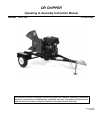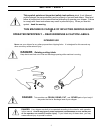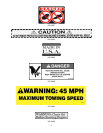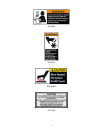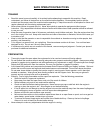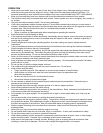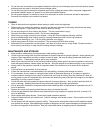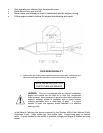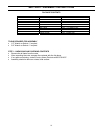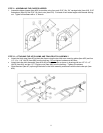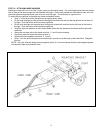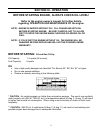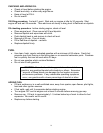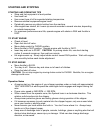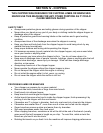• Do not allow an accumulation of processed material to build up in the discharge area as this will prevent proper
discharge and can result in kick-back from the chipper chute.
• Do not allow any part of the engine, especially around the cooling fans and muffler, to become clogged with
processed material, leaves, oil, grease or any other combustible material.
• Do not operate engine if air cleaner or cover over carburetor air-intake is removed, except for adjustment.
Removal of such parts could create a fire hazard.
TOWING
• Obey all state and local regulations when towing on public roads and highways.
• Before towing, be certain the chipper is correctly and securely attached to the towing vehicle and the safety
chains are in place. Leave slack in the chains to allow for turning.
• Do not allow anyone to sit or ride on the chipper. This can cause serious injury.
• Stay alert for hidden hazards or traffic. Do not carry passengers.
• Never carry any cargo or wood on your chipper. It may fall off and endanger following vehicles.
• Allow for added length when turning, parking, crossing intersections and in all driving situations.
• Be care when backing up, you. You can easily jackknife your chipper.
• Adjust towing speed for terrain and conditions. Do not exceed 45 MPH when towing.
• Because the is no suspension on the chipper, it will tend to bounce more on rough roads. Be extra cautious
when towing over bumpy or rough terrain including railroad crossings.
MAINTENANCE AND STORAGE
• Keep machine, attachments and accessories in safe working condition.
• Check engine mounting bolts and other hardware at frequent intervals for proper tightness. Never operate your
chipper in poor mechanical condition or when in need of repair. Be sure all safety guards and shields are in
proper position. These safety devices are for your protection.
• Never store machine with fuel in the fuel tank inside a building where ignition sources are present, such as hot
water and space heaters, clothes dryers and the like. Allow the engine to cool before storing in any enclosure.
• Always refer to the operator’s manual for important details if the machine is to be stored for an extended
period.
• If the fuel tank is to be drained, do this outdoors.
• Follow the manufacturer’s recommendations for safe loading, unloading and storage of machine.
• If it is necessary for any reason to unclog the feed intake or discharge openings or to inspect or repair the
machine where a moving part can come in contact with your body or clothing, shut the machine off, allow all
moving parts to come to a complete stop, disconnect the spark plug wire(s) and allow the engine to cool before
attempting to unclog, inspect or repair.
• Check the knife mounting screws at frequent intervals for proper tightness. Also visually inspect the knife for
wear or damage. Replace the knife with parts that meet original equipment specifications.
• Knives should be checked for sharpness and the bolts attaching them to the flywheel for tightness every 8-10
hours of operation.
• Replace the nylock nuts securing the knife every time you replace the knife.
• Check the gap between the knife and wear plate every time you sharpen or replace the knife, or every 8-10
hours of operation.
• Never tamper with safety devices. Check their proper operation regularly.
• Inspect the belt each time you use the unit. Look for damage, worn areas or tears. Do not use the unit if this
condition exists.
• Do not tamper with the engine’s governor setting. The governor controls the maximum safe operation speed
and protects the engine. Over-speeding the engine is dangerous and will cause damage to the engine and to
the other moving parts of the machine. See your authorized dealer for engine governor adjustments.
8



